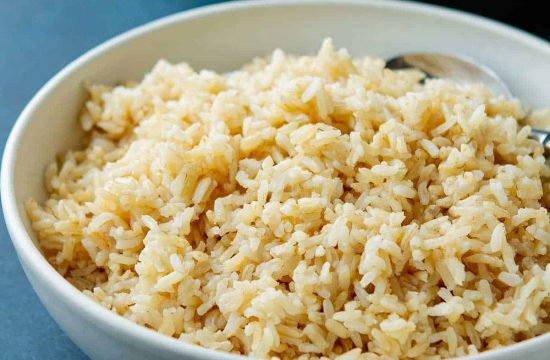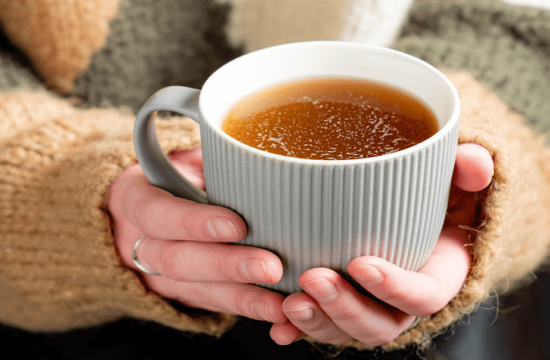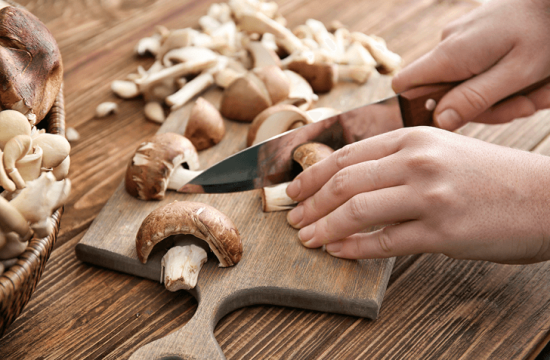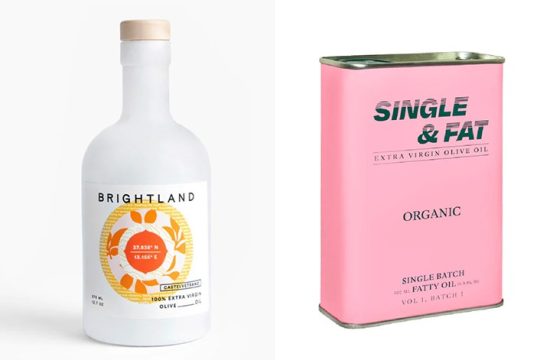This article explains Sushruta Samhita Sutrasthana Chapter 41 “Dravya Vishesha Vijnaniya Adhyaya” – Knowledge of categories of Drugs.
Dravya Vishesha Vijnaniya Adhyaya – Knowledge of categories of Drugs
अथातो द्रव्यविशेषविज्ञानीयमध्यायं व्याख्यास्यामः ||१||
यथोवाच भगवान् धन्वन्तरिः ||२||
We will now expound the chapter by name Dravya Vishesha Vinaniya special knowledge of (categories of) drugs; as revealed by the venerable Dhanvantari.
Read – Lord Dhanwantari ‘The God of Ayurveda’
Dravya Utpatti
Genesis of substances
तत्र पृथिव्यप्तेजोवाय्वाकाशानां समुदायाद्द्रव्याभिनिर्वृत्तिः, उत्कर्षस्त्वभिव्यञ्जको भवति- इदं पार्थिवमिदमाप्यमिदं तैजसमिदं वायव्यमिदमाकाशीयमिति ||३||
Substances (drugs) are born from the combination of Prthvi, Ap, ejas, Vayu and Aksa (Pancamahabhutas or five primary elements). That (element) which is predominant among these becomes the cause for their classification such as Parthiva, Apya, Taijasa, Vayaviya and Akasiya i.e., we can tell that
- this is parthiva (when prithvi mahabhuta – earth element is predominant in the substance)
- this is apya (when ap or jala mahabhuta – water element is predominant in the substance)
- this is taijasa (when teja or agni mahabhuta – fire element is predominant in the substance)
- this is vayavya (when vayu mahabhuta – air element is predominant in the substance)
- this is akasiya (when akasa mahabhuta – ether element is predominant in the substance)
Read – Dravya: Meaning, Ayurvedic Explanation
Dravya Bheda – Categories of drugs
Qualities of Parthiva Dravya
Substances predominant in earth element
तत्र स्थूलसान्द्रमन्दस्थिरगुरुकठिनं गन्धबहुलमीषत्कषायं प्रायशो मधुरमिति पार्थिवं; तत् स्थैर्यबलगौरवसंघातोपचयकरं विशेषतश्चाधोगतिस्वभावामिति॥४(१)॥
Substances which have the below mentioned qualities are said to be Parthiva (predominant of prithvi bhuta or earth element). These substances are –
- gross,
- thick,
- slow / weak,
- stable,
- heavy,
- hard,
- prominent in smell / odour,
- slightly astringent and generally sweet in taste
Benefits – These bestow stability, strength, heaviness, compactness and stoutness; have a tendency of moving downward especially.
Read – Earth Element – Qualities, Functions, Diseases, Treatment
Qualities of Apya Dravya
Substances predominant in water element
शीतस्तिमितस्निग्धमन्दगुरुसरसान्द्रमृदुपिच्छिलं रसबहुलमीषत्कषायाम्ललवणं मधुररसप्रायमाप्यं ;
तत् स्नेहह्लादनक्लेदनबन्धनविष्यन्दनकरमिति॥४(२)॥
Substances which have the below mentioned qualities are said to be Apya (predominant of Ap bhuta or water element). These substances are –
- cold,
- static,
- unctuous,
- mild / slow,
- heavy,
- moving,
- thick,
- soft,
- slimy,
- very juicy (tasty),
- slightly astringent, sour, salty and prominently sweet in taste
Benefits – These bestow unctuousness, Pleasantness, moistening, Binding together, and promote secretions.
Read – Relationship of Water Element With Doshas And Lifespan
Qualities of Taijasa Dravya
Substances predominant in fire element
उष्णतीक्ष्णसूक्ष्मरुक्षखरलघुविशदं रुपबहुलमीषदम्ललवणं कटुकरसप्रायं विशेषतश्चोर्ध्वगतिस्वभावमिति तैजसं; तद्दहनदारणतापनाप्रकाशनप्रभावर्णकरमिति; ॥४(३)॥
Substances which have the below mentioned qualities are said to be Taijasa (predominant of agni bhuta or fire element). These substances are –
- hot,
- sharp (penetrating ),
- subtle,
- dry,
- rough,
- light,
- viscous / clear,
- prominent in form / appearance,
- slightly sour and salt and prominently pungent in taste;
- have the natural tendency to move upwards especially
Benefits – These bestow burning, ripening, digestion, bursting tearing, heating, illuminating, lustre and colour.
Read – Understanding Agni: Concept, Definition, Functions, Types
Qualities of Vayaviya Dravya
Substances predominant in air element
सूक्ष्मरुक्षखरशिशिरलघुविशदं स्पर्शबहुलमीषत्तिक्तं विशेषतः कषायमिति वायवीयं तद्वैशद्यलाघवग्लपनविरुक्षणाविचारणकरमिति ॥४(४)॥Substances which have the below mentioned qualities are said to be Vayaviya (predominant of vayu bhuta or air element). These substances are –
- minute,
- dry,
- rough,
- cold,
- light,
- viscid,
- prominently tactile (understandable by touch),
- slightly bitter and prominently astringent
Benefits – These bestow viscidity, lightness, tiredness / impotence, dryness and various thought process in the mind.
Qualities of Akasiya Dravya
Substances predominant in ether element
श्लक्ष्णसूक्ष्ममृदुव्यवायिविशदविविक्तमव्यक्तरसं शब्दबहुलमाकाशीयं, तन्मार्दवशौषिर्यलाघवकरमिति ॥४(४)॥
Substances which have the below mentioned qualities are said to be Akasiya (predominant of akasa bhuta or ether element). These substances are –
- smooth,
- minute (subtle),
- soft,
- quick spreading,
- viscid,
- separating,
- with un-manifest taste
- prominently has sound (cause sound)
These bestow softness, hollowness and lightness.
Read – Akasha Mahabhuta: Qualities, Functions, How To Balance
Sarvam Ausadham
All substances are medicines
अनेन निदर्शनेन नानौषधीभूतं जगति किञ्चिद्द्रव्यमस्तीति कृत्वा तं तं युक्तिविशेषमर्थं चाभिसमीक्ष्य स्ववीर्यगुणयुक्तानि द्रव्याणि कार्मुकाणि भवन्ति |
तानि यदा कुर्वन्ति स कालः, यत् कुर्वन्ति तत् कर्म, येन कुर्वन्ति तद्वीर्यं, यत्र कुर्वन्ति तदधिकरणं, यथा कुर्वन्ति स उपायः, यन्निष्पादयन्ति तत् फलमिति ||५||
From the above illustration, it is made clear that “there is no substance in the world which is not medicinal”. Substances endowed fully with their natural potencies and qualities, used in appropriate manner, for specified purposes, become effective (perform the functions efficiently).
The time period in which these substances (medicines) perform their actions is called kala (time of action). The actions that these substances (medicines) do (perform) are called karma (actions). That by which they perform their functions is called virya (potency). The place or site where they perform their functions is called adhikarana (site of activity, target). The method in which they perform these actions is called as upaya (mechanism). The result produced by these substances as an effect of their actions is called phala (result, benefit).
Read – Upaya: Examination Of Means Of Action
Bhuta – Karma sambandha
Elements and actions of Drugs
तत्र, विरेचनद्रव्याणि पृथिव्यम्बुगुणभूयिष्ठानि, पृथिव्यापो गुर्व्यः, तानि गुरुत्वादधो गच्छन्ति, तस्माद्विरेचनमधोगुणभूयिष्ठमनुमानात् ; वमनद्रव्याण्यग्निवायुगुणभूयिष्ठानि, अग्निवायु हि लघू, लघुत्वाच्च तान्यूर्ध्वमुत्तिष्ठन्ति, तस्माद्वमनमप्यूर्ध्वगुणभूयिष्ठम्; उभयगुणभूयिष्ठमुभयतोभागम्; आकाशगुणभूयिष्ठं संशमनं; साङ्ग्राहिकमनिलगुणभूयिष्ठम्, अनिलस्य शोषणात्मकत्वात्; दीपनमग्निगुणभूयिष्ठं, तत्समानत्वात्; लेखनमनिलानलगुणभूयिष्ठं; बृंहणं पृथिव्यम्बुगुणभूयिष्ठम्; एवमौषधकर्माण्यनुमानात् साधयेत् ||६||
- Purgation drugs predominantly possess the qualities of Prithvi (earth element) and ambu (ap – water element). Both prthvi and ap are heavy. Because of their heaviness, they move downwards. Hence it should be inferred that purgation is prominently downward in movement.
- Emetic drugs possess the qualities of Agni and Vayu prominently. Agni and vayu are light. Because of lightness they move upwards. Hence it should be inferred that vomiting is prominently upward in movement
- Drugs which possess the qualities of both these groups (in other words, having predominance of four Bhutas – Prithvi, ap, Agni and Vayu) have movement in both directions (produce both purgation and vomiting).
- Drugs which are predominantly of Akasa Bhutaare samsamana (palliatives).
- Drugs predominance in Vayu Bhuta are Sangrahi (withholding, stopping, constipating) because of the property of causing evaporation of moisture.
- Drugs predominant with qualities of Agni (tejas bhutas) are Dipana (kindling digestion, causing hunger) because of similarity of action.
- Drugs predominant with qualities of vayu and agni (Tejas) Bhutas are Lekhana( cause scraping or scarification).
- Drugs predominant of qualities of Prthvi and ambu (ap bhuta) are Brmhana (stoutening).
Read – Vamanopaga Gana: Emesis Aiding Herbs: Review, Benefits, Formulations
In this manner, the actions of drugs should be inferred.
Action of bhutas (drugs containing particular combinations of bhutas) on doshas
भवन्ति चात्र-
भूतेजोवारिजैर्द्रव्यैः शमं याति समीरणः |
भूम्यम्बुवायुजैः पित्तं क्षिप्रमाप्नोति निर्वृतिम् ||७||
खतेजोऽनिलजैः श्लेष्मा शममेति शरीरिणाम् |
वियत्पवनजाताभ्यां वृद्धिमभ्येति मारुतः ||८||
आग्नेयमेव यद्द्रव्यं तेन पित्तमुदीर्यते |
वसुधाजलजाताभ्यां बलासः परिवर्धते ||९||
एवमेतद्गुणाधिक्यं द्रव्ये द्रव्ये विनिश्चितम् |
द्विशो वा बहुशो वाऽपि ज्ञात्वा दोषेषु चाचरेत् ||१०||
Samirana (Vata) gets mitigated (pacified) by substances (drugs) possessing prthvi, tejas and ap bhutas (i.e., earth, fire and water elements).
Pitta quickly gets mitigated by drugs possessing Prthvi (earth), Ap (water) and Vayu (air) Bhutas.
Slesma / Kapha gets mitigated by drugs possessing Akasa (ether), Tejas (fire) and Vayu (air) bhutas.
By drugs possessing Akasa and Vayu Bhutas, Vata becomes increased (aggravated).
By drugs possessing Agni (Tejas) Bhuta, Pitta becomes increased.
By drugs which possess Prthvi and Ap Bhutas, Balasa (Kapha) becomes increased.
In this manner, the predominance of qualities of Bhutas has been dedicated in every substance. After carefully determining two or more of these (Bhutas), these drugs should be used for the Doshas for their decrease or increase.
Read – Virechanopaga Gana: Purgation Aiding Herbs: Review, Benefits
Bhuta-Virya sambandha
Elements of Potency of Drugs
तत्र य इमे गुणा वीर्यसञ्ज्ञकाः शीतोष्णस्निग्धरूक्षमृदुतीक्ष्णपिच्छिलविशदास्तेषां तीक्ष्णोष्णावाग्नेयौ, शीतपिच्छिलावम्बुगुणभूयिष्ठौ, पृथिव्यम्बुगुणभूयिष्ठः स्नेहः, तोयाकाशगुणभूयिष्ठं मृदुत्वं, वायुगुणभूयिष्ठं रौक्ष्यं, क्षितिसमीरणगुणभूयिष्ठं वैशद्यं; विपाकावुक्तगुणौ |
तत्र, उष्णस्निग्धौ वातघ्नौ, शीतमृदुपिच्छिलाः पित्तघ्नाः, तीक्ष्णरूक्षविशदाः श्लेष्मघ्नाः गुरुपाको वातपित्तघ्नः, लघुपाकः श्लेष्मघ्नः |
तेषां मृदुशीतोष्णाः स्पर्शग्राह्याः, पिच्छिलविशदौ चक्षुःस्पर्शाभ्यां, स्निग्धरूक्षौ चक्षुषा, तीक्ष्णो मुखे दुःखोत्पादनात् |
गुरुपाकः सृष्टविण्मूत्रतया कफोत्क्लेशेन च, लघुर्बद्धविण्मूत्रतया मारुतकोपेन च |
तत्र तुल्यगुणेषु भूतेषु रसवैशेष्यमुपलक्षयेत् |
तद्यथा- मधुरो गुरुश्च पार्थिवः, मधुरः स्निग्धश्चाप्य इति ||११||
Among the qualities, Sita (cold), Usna (hot), Snigdha (unctuous) Ruksa (dry), Mrdu (soft), Tiksna (sharp / Penetrating), Picchila (slimy) and Visada (Viscid) are called as Virya (potencies). Out of these –
- Tiksna (sharp) and Usna (hot) are Agneya (predominant of agni bhuta),
- Sita (cold) and Picchila (slimy) are Apya (predominant of ap bhuta),
- Snigdha (unctuousness) is from the predominance of Prthvi and Ap Bhutas;
- Mrduta (softness) is from predominance of Ap and Akasa Bhutas;
- Rauksya (dryness) is from predominance of vayu bhuta,
- Vaisadya(viscidity) is due to predominance of qualities of Prthvi and Vayu bhutas.
The qualities of Vipaka have been said earlier. Usna (hot) and Snigdha (unctuous) mitigates Vata. Sita (cold), Mrdu(soft) and Picchila (slimy) mitigate Pitta. Tiksna (sharp / penetrating), Ruksa (Dry) and Visada(Visid) mitigate Kapha. Guru Vipaka mitigates Vata and Pitta while laghu Vipaka mitigates kapha.
Out of these, Mrdu (soft), Sita (cold) and Usna (hot) are recognizable by touch. Snigdha (unctuous) and Ruksa (dry) are recognizable by the eye (sight). Tiksna (sharp, penetrating) is recognizable by its causing discomfort in the mouth.
Guru Vipaka is recognized by elimination of urine and faeces and increase of Kapha. Laghu Vipaka is recognized by non- elimination of faeces and urine and aggravation (increase) of vata.
Qualities of Bhutas of identical nature should be inferred in the different Rasa (tastes) for e.g, Madhura (sweet) and guru (heavy) are Parthiva, while madhura (sweet) and Snigdha (unctuous) are Apya etc.
Read – Classification Of Qualities (Gunas) As per Ayruveda
भवति चात्र-
गुणा य उक्ता द्रव्येषु शरीरेष्वपि ते तथा |
स्थानवृद्धिक्षयास्तस्माद्देहिनां द्रव्यहेतुकाः ||१२||
Qualities of substances which have been enumerated so far are the same in the body (the Doshas, Dhatu and Malas) also. The normalcy, increase and decrease of these are due to (use of) substances (drugs, foods etc).
इति श्रीसुश्रुतसंहितायां सूत्रस्थाने द्रव्यविशेषविज्ञानीयोनामैकचत्वारिंशत्तमोऽध्यायः ॥४१॥
Thus ends the Forty first chapter by name Dravyavishesha Vijnaniya in Sutra Sthana of Sushruta Samhita.












